Mekong puffer - Tetraodon suvattii
Scientific name: Tetraodon suvattii
Common name: Mekong puffer
Family: Tetraodontidae
Usual size in fish tanks: 10 - 12 cm (3.94 - 4.72 inch)
014
Recommended pH range: 6 - 7.5
Recommended water hardness: 7 - 20°N (125 - 357.14ppm)
0°C 32°F30°C 86°F
Recommended temperature range: 23 - 27 °C (73.4 - 80.6°F)
The way how these fish reproduce: Spawning
Where the species comes from: South Asia
Temperament to its own species: aggressive/territorial
Temperament toward other fish species: aggressive to smaller
Usual place in the tank: Bottom levels
Food and Feeding
The Mekong Puffer (Tetraodon suvattii) is a carnivorous predator that requires a diet rich in protein. It should be fed every other day to prevent overfeeding and maintain proper digestion. These fish readily accept:
- Live or frozen feeder fish
- Ghost shrimp and crayfish
- Chopped mussels, cockles, and prawns
To ensure optimal nutrition, offer a varied diet and avoid over-reliance on feeder fish, which may lack essential nutrients. Hard-shelled foods, such as mussels or snails, help wear down their constantly growing teeth and prevent overgrowth issues common in pufferfish.
Origin and Natural Habitat
The Mekong Puffer is endemic to Southeast Asia, specifically the Mekong River Basin in Thailand, Laos, and Cambodia. It inhabits slow-moving rivers, floodplains, and stagnant pools with muddy or sandy bottoms, where it buries itself to ambush prey. These environments have soft, acidic to neutral water with moderate hardness and plenty of hiding spots.
To replicate its natural habitat, the aquarium should include:
- Fine sand or soft substrate for burrowing
- Flat rocks or driftwood to provide shelter
- Dim lighting to mimic murky water conditions
Sexing
There are no visible external differences between male and female Mekong Puffers, making sexing difficult without internal examination.
Breeding
Mekong Puffers are substrate spawners, meaning they lay their eggs on flat surfaces such as rocks or slate. To encourage breeding:
- Provide flat stones as spawning sites.
- Ensure stable water conditions with a slightly acidic to neutral pH (6.0-7.5).
- Observe courtship, where the pair circles each other before spawning.
- After fertilization, the male guards the eggs until they hatch in 6-7 days.
Newly hatched fry require nutrient-rich foods, such as:
- Infusoria (for the first few days)
- Commercial fry food enriched with vitamins
- Baby brine shrimp once they grow large enough
Due to their aggressive nature, breeding in captivity is rare, and successful raising of fry requires careful management.
Lifespan
With proper care, Tetraodon suvattii can live up to 10 years, making it a long-term commitment for dedicated aquarists.
Tank Setup and Compatibility
Mekong Puffers are highly aggressive and territorial, making them unsuitable for community tanks. It is best to keep them:
- Alone in a species-only tank
- In a well-filtered aquarium (due to their high waste production)
- With strong water flow and regular maintenance
Tank size recommendations:
- Minimum tank size: 75 liters (20 gallons) for a single fish
- Ideal tank size: 115 liters (30 gallons) to accommodate their territorial behavior
They produce large amounts of waste, so a powerful filtration system and weekly 50% water changes are necessary to maintain water quality.
Water Parameters
- Temperature: 23 - 27°C (73.4 - 80.6°F)
- pH Range: 6.0 - 7.5
- Water Hardness: 7 - 20°dGH (125 - 357 ppm)
- Filtration: High-quality canister or sponge filter to handle their waste production
Short Description
The Mekong Puffer is a solitary, ambush predator that thrives in a species-only aquarium due to its aggressive nature. It spends much of its time buried in the substrate, waiting to attack prey. While fascinating to observe, this species is not recommended for beginners due to its:
- Highly aggressive temperament
- Strict dietary needs
- High waste output requiring intensive filtration and maintenance
With proper care and an experienced aquarist, Tetraodon suvattii makes a unique and rewarding addition to specialized freshwater aquariums.
Pictures
Bought by aqua-fish.net from jjphoto.dk.
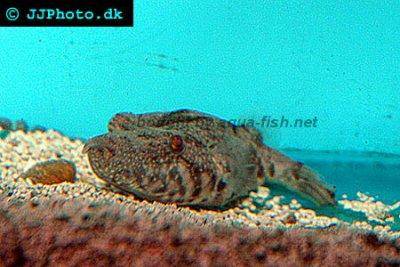




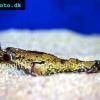 Red
Red 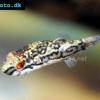 Striped
Striped 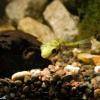 Malabar
Malabar 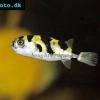 Amazon
Amazon 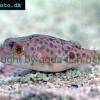 Red-spot
Red-spot 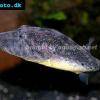 Bailey’s
Bailey’s 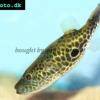 Thai
Thai 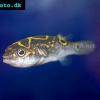 Figure
Figure 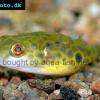 Fang’s
Fang’s 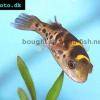 Green
Green  Coral
Coral  Giant
Giant 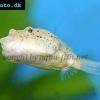 Congo
Congo 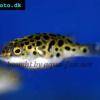 Green
Green 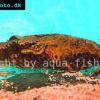 Humpback
Humpback 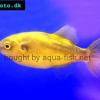 Bronze
Bronze